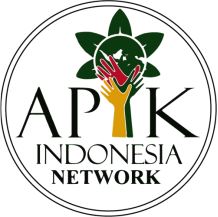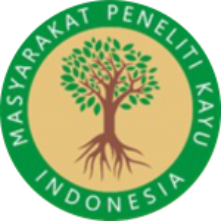SCREENING ANTAGONISTIK ACTINOBACTERIA SEBAGAI AGEN BIOKONTROL TERHADAP Ganoderma boninense
Screening of antagonistic actinobacteria as biocontrol agent against Ganoderma boninense
DOI:
https://doi.org/10.22437/jsilvtrop.v6i1.23471Keywords:
Actinomycetes, Antimicrobial, Fungal Plant PathogenAbstract
ABSTRACT
Actinobacteria (Actinomycetes) is a unique group among microbe and prokaryotes. They have both characteristics of fungi and bacteria. Actinobacteria could produce a wide range of secondary metabolites such as antibiotics, antifungal, antiprotozoal, antiviral, anticholesterol, antihelminth, anticancer, and immunosuppressant. It may cause a better combination as a biocontrol agent for plants. This research aimed to investigating potential actinomycetes as biocontrol agents of fungal plant pathogens, especially Ganoderma boninense. The method in this research consists of a few steps. Those are samples collection from soil and water in the primer forest and plantation soil (palm oil), samples isolation, actinobacteria characterization, and evaluation of the antifungal activity. The result has shown that 29 fungal isolates were found in this study. The percent growth inhibition (PGI) of actinobacteria isolates variated from 0-81,58%. And their inhibition mechanisms were antibiosis and competition.
Keywords: actinomycetes, antimicrobial, fungal plant pathogen
Â
ABSTRAK
Actinobacteria (Actinomycetes) adalah kelompok unik dari kelompok mikroba dan prokariota. Actinobacteria memiliki karakteristik jamur dan bakteri dan dapat menghasilkan berbagai metabolit sekunder seperti antibiotik, antijamur, antiprotozoal, antivirus, antikolesterol, antihelminth, antikanker, serta imunosupresan. Kemampuanya ini dapat dimanfaatkan untuk campuran pada agen biokontrol tanaman. Penelitian ini bertujuan untuk mengetahui potensi aktinomisetes sebagai agen biokontrol jamur patogen tanaman, khususnya Ganoderma boninense. Metode dalam penelitian ini terdiri dari beberapa langkah, yaitu pengambilan sampel dari tanah dan air di hutan primer dan tanah perkebunan (kelapa sawit), isolasi sampel, karakterisasi aktinobakteri, dan evaluasi aktivitas antijamur. Hasil penelitian ini menunjukkan bahwa 29 isolat jamur yang ditemukan. Persentase hambatan pertumbuhan (PGI) isolat aktinobakteri bervariasi antara 0-81,58%. Dan mekanisme penghambatannya adalah antibiosis dan kompetisi.
 Kata kunci: actinomycetes, antimikroba, jamur patogen tanaman
Downloads
References
Anandan, R., Dharumadurai, D., Manogaran, G. 2016. An Introduction to Actinobacteria, in D. Dhanasekaran, Y. Jiang (eds.), Actinobacteria - Basics and Biotechnological Applications. London: IntechOpen,
Amaria, W., Rita, H., Samsudin. 2015. “Evaluation of Antagonistic Fungi as Inhibitor of Rigidoporus microporus cause of White Root Disease in Rubber Plantsâ€. J. TIDP 2 (1):51-60.
Araujo, R., Gupta V. V.S.R., Reith, F., Bissett, A., Mele, P., Christopher M.M. Franco.2020. Biogeography and emerging significance of Actinobacteria in Australia and Northern Antarctica soils. Soil Biology and Biochemistry 146:1-9.
Budi, M. B. S., Giyanto, Tondok, E T., 2022. Isolation of actinomycetes from peatland to suppress the growth of Ganoderma boninense the causal agent of basal stem rot disease in oil palm. Biodiversitas 23 (11): 5914-5922.
Bhatti, A.A., Haq, S. & Bhat, R.A., 2017. Microbial Pathogenesis Actinomycetes Benefaction Role in Soil and Plant Health. Microbial Pathogenesis 111:458–467.
Costa, F.G., Zucchi, T.D. & De Melo, I.S., 2013. Biological Control of Phytopathogenic Fungi by Endophytic Actinomycetes Isolated from Maize (Zea mays L.). Brazilian Archives of Biology and Technology 56(6):948–955.
Dinas Perindustrian dan Perdagangan, 2017. Buku Data Base Potensi Komoditi Industri Agro, Jambi: Dinas Perindustrian dan Perdagangan Provinsi Jambi.
Febrianti, F., Sasongkowati, R., & Anggraini, A. D. 2021. Potensi Metabolit Sekunder Antifungi Aktinomisetes yang Diisolasi dari Tanah Mangrove Wonorejo Surabaya terhadap Trichophyton rubrum. Jurnal Analis Kesehatan Sains, 10(1),21–24.
George, M. et al., 2012. Distribution and Bioactive Potential of Soil Cctinomycetes from Different Ecological Habitats. African Journal of Microbiology Research 6(10):2265–2271.
Ghorbani-Nasrabadi, R. et al., 2013. Distribution of Actinomycetes in Different Soil Ecosystems and Effect of Media Composition on Extracellular Phosphatase Activity. Journal of soil science and plant nutrition 13:223–236.
Heydari, Asghar, and Mohammad Pessarakli. 2010. A Review on Biological Control of Fungal Pathogens Using Microbial Antagonists. Journal of Biological Sciences 10 (4):273–90.
Jazuli, N. A., Kamu, A., Chong, K. P., Gabda, D., Hassan, A., Seman, I. A., Ho, C. M. 2022. A Review of Factors Affecting Ganoderma Basal Stem Rot Disease Progress in Oil Palm, 11. 2462:1-14.
Jose, P. A and Bhavanath, J. 2016. New Dimension of Research on Actinomyecetes: Quest for Next Generation Antibiotics. Frontiers in Microbiology 7:1-5.
Ouchari, L, Boukeskasse, A., Bouizgarne,B and Ouhdouch, Y. 2019. Antimicrobial Potential of Actinomycetes Isolated from The Unexplored Hot Merzouga Desert and Their Taxonomic Diversity. The Company of Biologists 8:1-7
Saadoun I, Ananbeh H, Ababneh Q, Jaradat Z. 2017. Comparative Distribution of Soil Streptomyces Flora in Different Jordanian Habitats and Their Enzymatic and Antibiotic Activities. Research Journal of Pharmaceutical, Biological and Chemical Sciences. 8(2): 1285-1297.
Sarma, V., & Salwan, R. 2018. Biocontrol Potential and Applications of Actinobacteria in Agriculture. New and Future Developments in Microbial Biotechnology and Bioengineering: 93–108.
Schneider, D., M. Engelhaupt, K. Allen, S. Kurniawan, V. Krashevska, M. Heinemann, H. Nacke, et al. 2015. “Impact of Lowland Rainforest Transformation on Diversity and Composition of Soil Prokaryotic Communities in Sumatra (Indonesia).†Frontier Microbiology 6: 1–12.
Sujarit, K., Pathom-aree, W., Mori, M., Dobashi, K., Shiomi, K.,Lumyong, S., 2020. Streptomyces palmae CMU-AB204 T, an Antifungal Producing-Actinomycete, As a Potential Biocontrol Agent to Protect Palm Oil Producing Trees from Basal Stem Rot Disease Fungus, Ganoderma boninense. Biological Control 148:1-12.
Trivedi, P., Leach, J. E., Tringe, G. S, Sa, T., Singh, B. K. 2020. Plant–Microbiome Interactions: from Community Assembly to Plant Health. Nature Reviews Microbiology. 18 (11): 607- 621.
Yit Kheng Goh, Y. K., Zoqratt, M. Z. H. Md., Goh, Y. K, A, Q., Ting, A. S. Y. 2020. Determining Soil Microbial Communities and Their Influence on Ganoderma Disease Incidences in Oil Palm (Elaeis guineensis) via High-Throughput Sequencing. Biology. 9 (424): 1-21.
Zanane, C., Latrache, H.M. Elfazizi, K., Zahir, H., Ell., M. 2018, Isolation of Actinomycetes from Different Soils of Beni Amir Morocco. Journal of Material and Environmental Sciences 9 (10): 2994-3000.
Zivkovic, Svetlana, Z. Ivanovic, S. Stojanovic, V. Gavrilovic, Jelica Balaz, and Tatjana Popovic. 2010. Screening of Antagonistic Activity of Microorganisms against Colletotrichum Acutatum and Colletotrichum gloeosporioides. Archives of Biological Sciences 62 (3):611–23.















